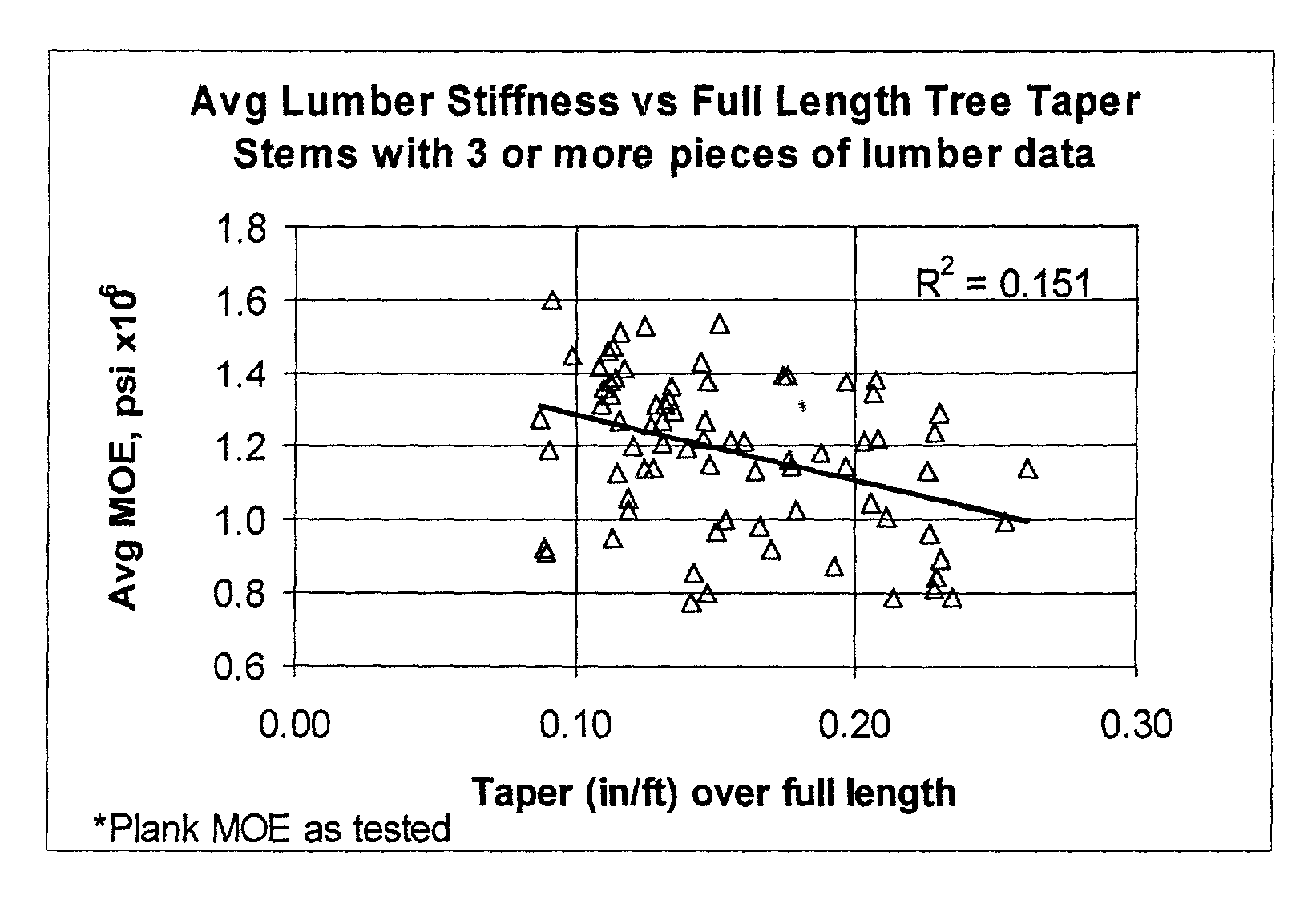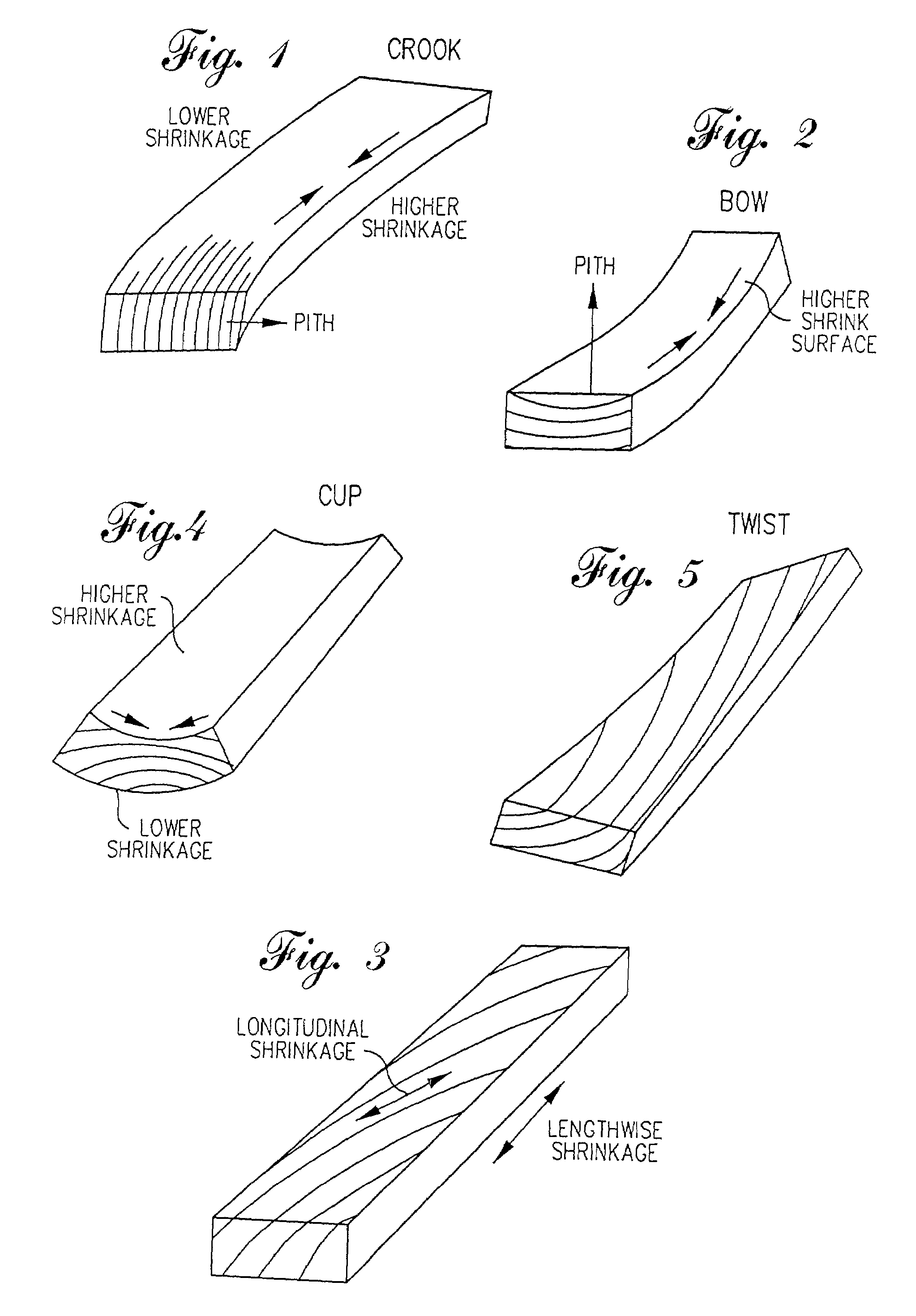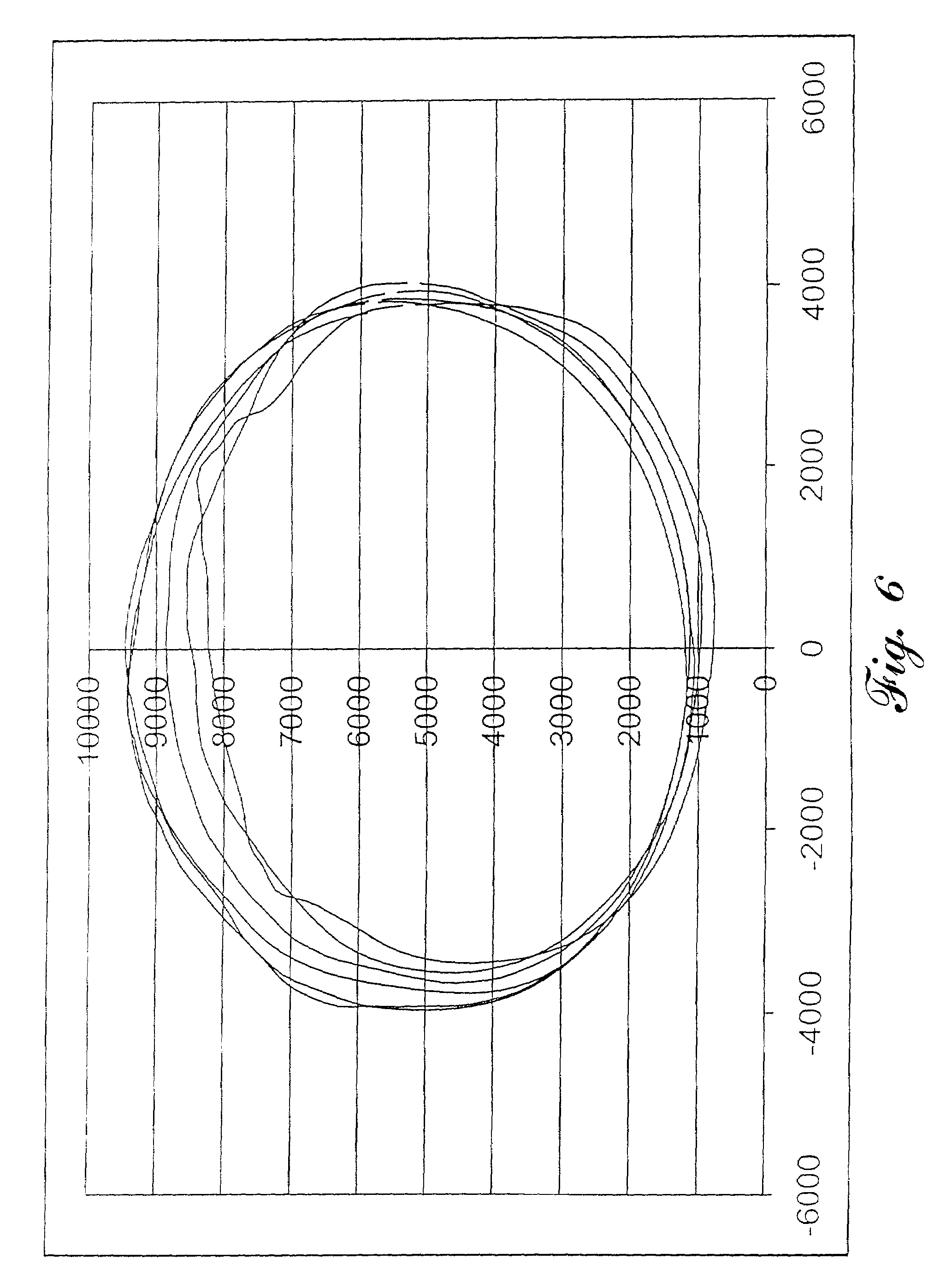Method of evaluating logs to predict properties of lumber or veneer produced from the logs
a technology of evaluating logs and predicting properties, which is applied in the direction of mechanical measurement arrangements, instruments, nuclear elements, etc., can solve the problems of inability to predict product properties, inability to accurately predict the properties of overall log geometry, and poor correlation, etc., to achieve convenient manipulation, improve prediction accuracy, and improve the effect of digitization
- Summary
- Abstract
- Description
- Claims
- Application Information
AI Technical Summary
Benefits of technology
Problems solved by technology
Method used
Image
Examples
example 1
[0032]A sawing study was conducted in which 80 loblolly pine plantation trees from three Arkansas stands were harvested, and the first two 16+ foot (4.88 m) lengths were sawn into nominal 2 inch dimension lumber in nominal 4–12 inch widths. The three stands ranged in age from 20 to 24 years old and the trees averaged 10.5 inches (267 mm) in diameter at breast height. The useful tree stem length would typically be in the range of about 38–42 ft (12.8 m) with a 6 in (15 cm) top diameter. Taper measurements potentially correlated with lumber stiffness and warp were made on the full stem length log, the first 32 feet, and the first 16 feet. The tree length and 33 foot taper measurements were made by hand and the 16 foot taper was measured by the mill log scanner. Taper was determined by subtracting the average diameter at the upper end from the average lower end diameter and dividing by log length. All processed lumber was coded to relate to the tree from which it was sawn. The test lum...
example 2
[0035]As each log approached the primary breakdown center in the sawmill, geometric data were generated by the Perceptron Log Optimizer software using four TriCam laser scanners. This equipment, manufactured by Perceptron Forest Products Division, Atlanta Ga., is typical of many of the scanners used in sawmills. Scanners used at this location will normally determine the best log orientation entering the saw and the optimum saw settings. In the present test the scanners measured x-y coordinates at about 100 points around the circumference of the log at each 1 ft (305 mm) increment along the log (refer to FIGS. 6 and 7 as examples). The x values and y values of each circumferential scan were averaged to determine a center point location. A longitudinal line is chosen as a reference location. Sixteen additional measurements potentially correlating to lumber warp were derived from the scanning data.[0036]A. Major axis sweep (in).[0037]B. Minor axis sweep (in).[0038]C. Combined sweep (in...
example 3
[0057]A second study was made on mid-south (Dierks, Ark.) loblolly pine lumber using about 120 trees. These were from a second thinning harvest and were approximately 26 years old. Full length stem taper and the 16 foot butt (first) log taper were measured as just described. Stress wave velocity was measured similarly for the full length stem and 16 foot (4.88 m) logs. The butt logs were sawn, and the lumber measured for MOE in the joist mode. In this case lumber was marked so as to be traceable back to both the tree and the log from which it was cut. The results of first log stress wave velocity plotted against taper of the full length tree stem is shown in FIG. 8. Results of taper vs MOE are shown in FIGS. 16 and 17. The correlation between taper and stiffness is substantially higher than in the previous test, both for first log taper and full stem length taper. Again, taper is seen as a useful predictor of lumber strength. This enables decisions as to optimum log utilization to b...
PUM
| Property | Measurement | Unit |
|---|---|---|
| diameter | aaaaa | aaaaa |
| widths | aaaaa | aaaaa |
| lengths | aaaaa | aaaaa |
Abstract
Description
Claims
Application Information
 Login to View More
Login to View More - R&D
- Intellectual Property
- Life Sciences
- Materials
- Tech Scout
- Unparalleled Data Quality
- Higher Quality Content
- 60% Fewer Hallucinations
Browse by: Latest US Patents, China's latest patents, Technical Efficacy Thesaurus, Application Domain, Technology Topic, Popular Technical Reports.
© 2025 PatSnap. All rights reserved.Legal|Privacy policy|Modern Slavery Act Transparency Statement|Sitemap|About US| Contact US: help@patsnap.com



